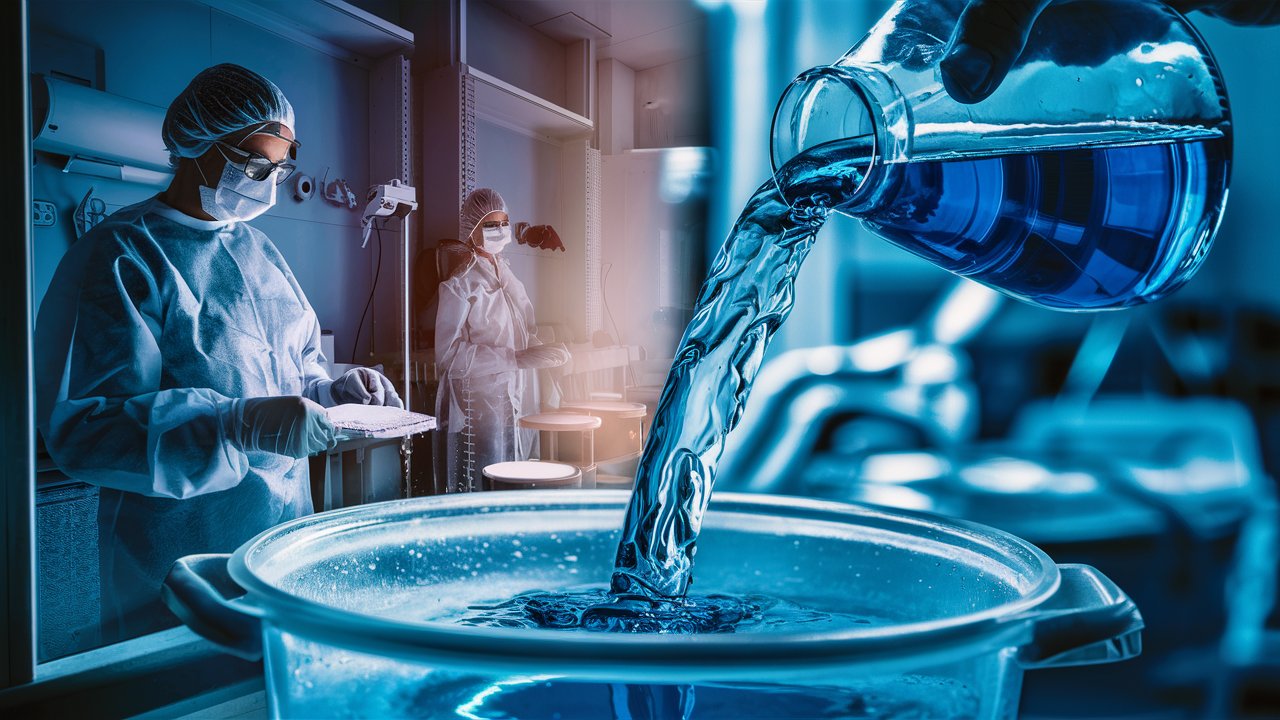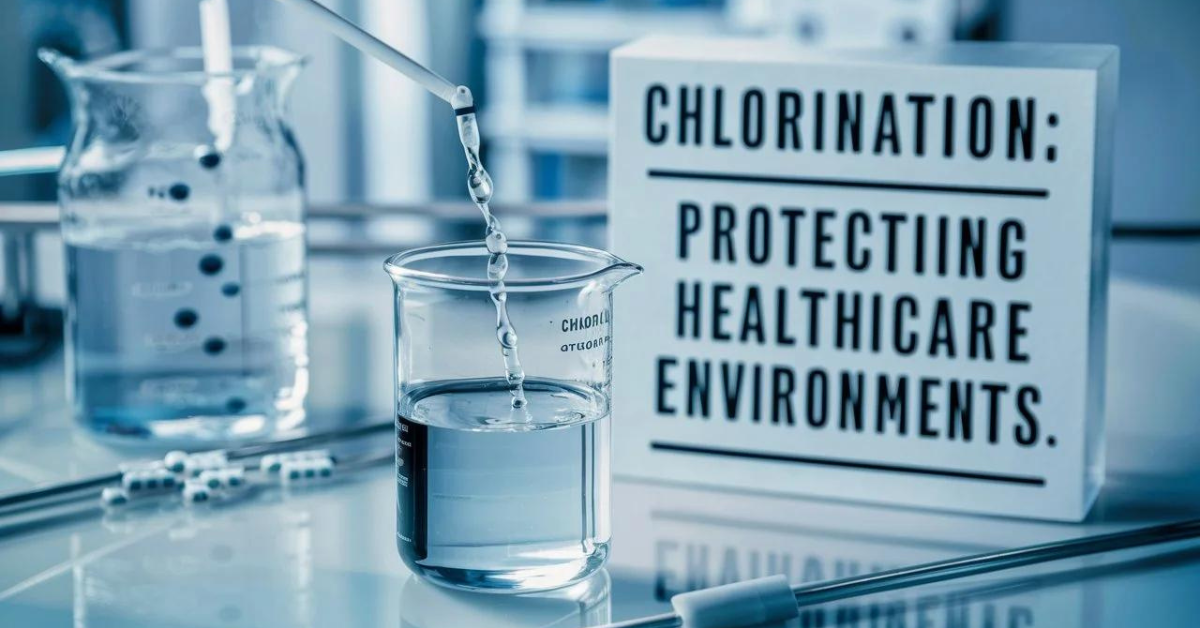Healthcare Hygiene: The Role of Chlorination
Introduction The Role of Chlorination
Healthcare hygiene is an indispensable aspect of maintaining patient safety and wellness within medical facilities. Among the various methods employed for hygiene management, chlorination stands out as a cornerstone in ensuring a clean and sterile environment. This article explores the critical role of chlorination in healthcare settings, shedding light on its significance and efficacy.
Overview of Healthcare Hygiene
Healthcare hygiene encompasses practices and protocols aimed at preventing the spread of infections and maintaining cleanliness within medical facilities. It involves rigorous cleaning procedures, sterilization of equipment, and adherence to strict hygiene protocols to safeguard patient health.
Understanding Chlorination
Chlorination is a disinfection method that involves the use of chlorine-based compounds to kill harmful microorganisms present in water. It is widely employed in healthcare facilities to ensure the safety of water sources and prevent the transmission of waterborne diseases.
Importance of Healthcare Hygiene
Maintaining high standards of healthcare hygiene is essential for preventing the spread of infections and protecting vulnerable patients from illness. Effective hygiene practices contribute to the overall well-being of patients and reduce the risk of healthcare-associated infections (HAIs).
The Link Between Chlorination and Hygiene
Chlorination plays a crucial role in healthcare hygiene by effectively disinfecting water sources and eliminating microbial contaminants. By ensuring the cleanliness and safety of water supplies, chlorination helps prevent the transmission of waterborne diseases and reduces the risk of infections among patients and healthcare workers.
The Role of Chlorination in Healthcare Facilities
Disinfection of Water Supply
Chlorination is instrumental in disinfecting the water supply within healthcare facilities, ensuring that it is free from harmful pathogens and contaminants.
Prevention of Waterborne Diseases
By eliminating microbial contaminants, chlorination helps prevent the transmission of waterborne diseases such as cholera, typhoid fever, and gastroenteritis.
Control of Microbial Growth
Chlorination inhibits the growth of bacteria, viruses, and other microorganisms in water, thereby maintaining its purity and safety for consumption and medical use.
Reduction of Healthcare-Associated Infections (HAIs)
Effective chlorination of water sources contributes to the reduction of HAIs, which are infections acquired by patients during their stay in healthcare facilities.
Chlorination Process Explained
Chlorine as a Disinfectant
Chlorine is a powerful disinfectant that effectively kills a wide range of bacteria, viruses, and parasites present in water.
Types of Chlorination Methods
There are various methods of chlorination, including batch chlorination, continuous chlorination, and shock chlorination, each tailored to specific needs and requirements.
Dosage and Contact Time
The effectiveness of chlorination depends on factors such as the concentration of chlorine used and the duration of contact time between chlorine and water.
Factors Affecting Chlorination Effectiveness
Several factors, such as water temperature, pH levels, and organic matter content, can influence the effectiveness of chlorination in disinfecting water.
Benefits of Chlorination in Healthcare Settings
Improved Patient Safety
By ensuring the cleanliness and safety of water sources, chlorination helps prevent waterborne infections and promotes overall patient safety.
Enhanced Infection Prevention
Chlorination plays a key role in infection prevention by reducing the risk of microbial contamination in water, which can lead to the transmission of infectious diseases.
Compliance with Regulatory Standards
Healthcare facilities are required to adhere to strict regulatory standards regarding water quality and hygiene. Chlorination helps ensure compliance with these standards by maintaining the purity and safety of water sources.
Reduction of Healthcare Costs
Preventing waterborne infections through effective chlorination can lead to significant cost savings for healthcare facilities by reducing the need for treatment and hospitalization of infected patients.
Preservation of Medical Equipment
Chlorination helps protect medical equipment from microbial contamination, prolonging its lifespan and ensuring its safe and effective use in patient care.

Best Practices for Chlorination in Healthcare Facilities
Regular Monitoring and Testing
Healthcare facilities should regularly monitor and test water quality to ensure that chlorination levels are adequate for effective disinfection.
Proper Maintenance of Chlorination Systems
Regular maintenance of chlorination systems is essential to ensure their proper functioning and effectiveness in disinfecting water sources.
Training of Healthcare Staff
Proper training of healthcare staff is crucial to ensure that chlorination procedures are followed correctly and that water quality is maintained at all times.
Collaboration with Public Health Authorities
Healthcare facilities should collaborate with public health authorities to implement best practices for chlorination and ensure compliance with regulatory standards.
Case Studies: Successful Implementation of Chlorination
Case Study 1: Hospital A
Hospital A implemented a comprehensive chlorination program, resulting in a significant reduction in waterborne infections among patients and healthcare workers.
Case Study 2: Clinic B
Clinic B upgraded its chlorination systems and implemented regular monitoring protocols, leading to improved water quality and increased patient satisfaction.
Case Study 3: Nursing Home C
Nursing Home C partnered with local public health authorities to implement a chlorination program tailored to its specific needs, resulting in a safer environment for residents and staff.
Challenges and Solutions
Residual Chlorine Management
Managing residual chlorine levels in water can be challenging, but proper monitoring and adjustment of chlorination systems can help ensure optimal disinfection without causing harm.
Chlorine Resistance in Pathogens
Some pathogens may develop resistance to chlorine over time, necessitating the use of alternative disinfection methods or higher chlorine concentrations to maintain effectiveness.
Addressing Concerns About Disinfection Byproducts
While chlorination is effective in killing microorganisms, it can also produce disinfection byproducts that may pose health risks. Implementing advanced water treatment technologies can help minimize these byproducts and ensure safe water supply.
Future Trends in Chlorination for Healthcare Hygiene
Advancements in Chlorination Technology
Ongoing research and development efforts are focused on developing more efficient and sustainable chlorination technologies, such as advanced oxidation processes and chlorine dioxide generation systems.
Integration of Alternative Disinfection Methods
In addition to traditional chlorination methods, healthcare facilities are exploring alternative disinfection methods, such as ultraviolet (UV) disinfection and ozone treatment, to complement existing chlorination practices and enhance water quality.
Focus on Sustainability and Environmental Impact
There is a growing emphasis on adopting sustainable chlorination practices that minimize environmental impact, such as using chlorine alternatives derived from renewable sources and implementing water reuse and recycling initiatives.
Conclusion
In conclusion, chlorination plays a vital role in maintaining healthcare hygiene standards and ensuring the safety and well-being of patients and healthcare workers. By effectively disinfecting water sources and preventing the spread of waterborne infections, chlorination contributes to a cleaner and safer healthcare environment. Moving forward, continued advancements in chlorination technology and a focus on sustainability will further enhance its role in promoting healthcare hygiene and preventing infections.
Recap of Chlorination’s Role in Healthcare Hygiene
Chlorination is essential for disinfecting water sources in healthcare facilities, preventing waterborne infections, and ensuring compliance with regulatory standards. Through effective chlorination practices, healthcare facilities can safeguard patient safety and reduce the risk of healthcare-associated infections.
Call to Action for Healthcare Facilities
Healthcare facilities are encouraged to prioritize chlorination as part of their hygiene protocols and invest in advanced chlorination technologies to ensure the cleanliness and safety of water sources. By implementing best practices for chlorination and collaborating with public health authorities, healthcare facilities can create a healthier environment for patients and staff.
Encouragement for Further Research and Innovation
Continued research and innovation in chlorination technology are essential for addressing emerging challenges and improving healthcare hygiene practices. By staying informed about the latest developments in chlorination and embracing sustainable and efficient disinfection methods, healthcare facilities can continue to raise the bar for hygiene standards and protect the health of their communities.

